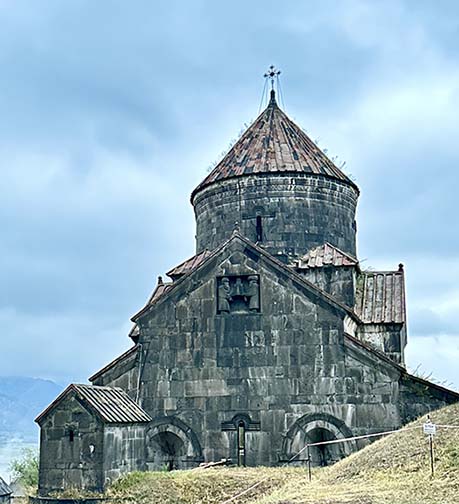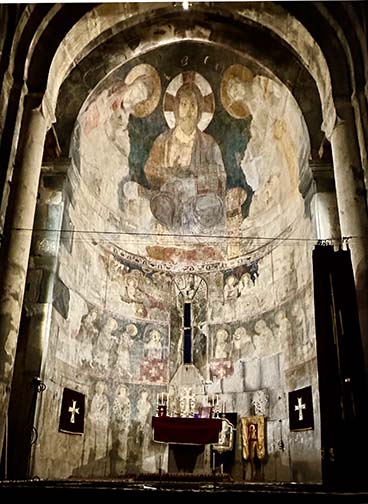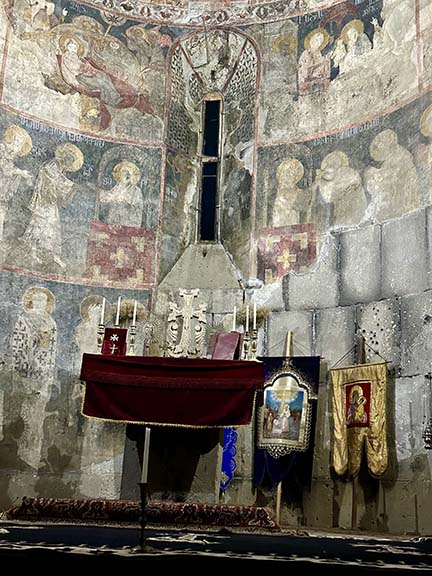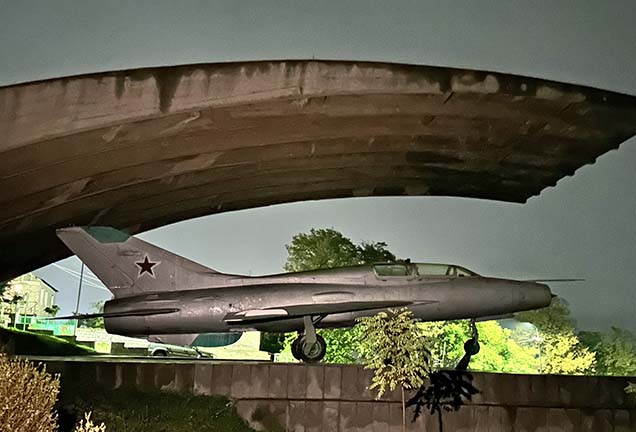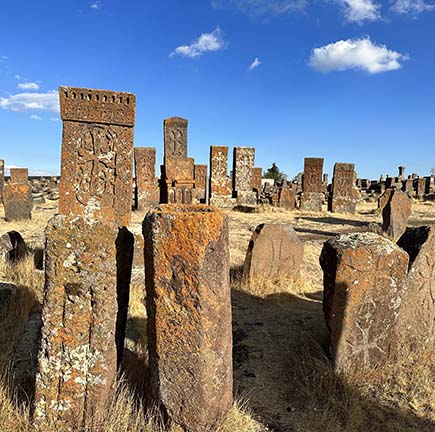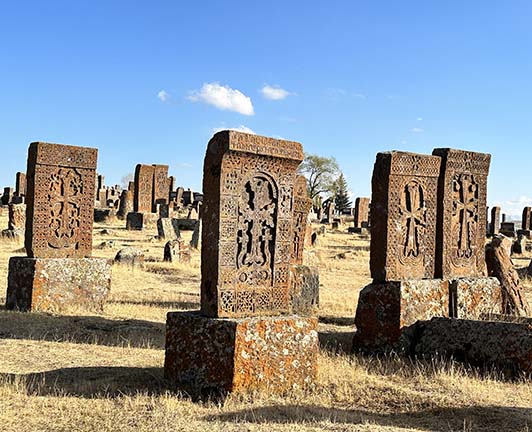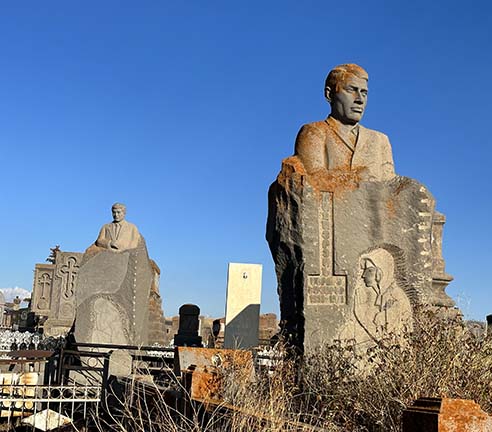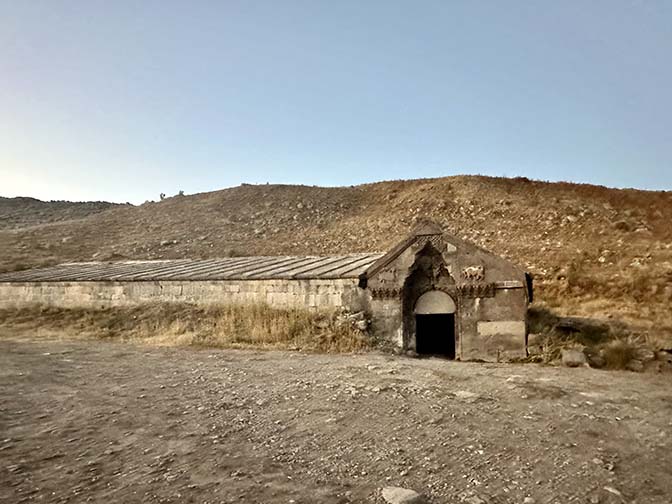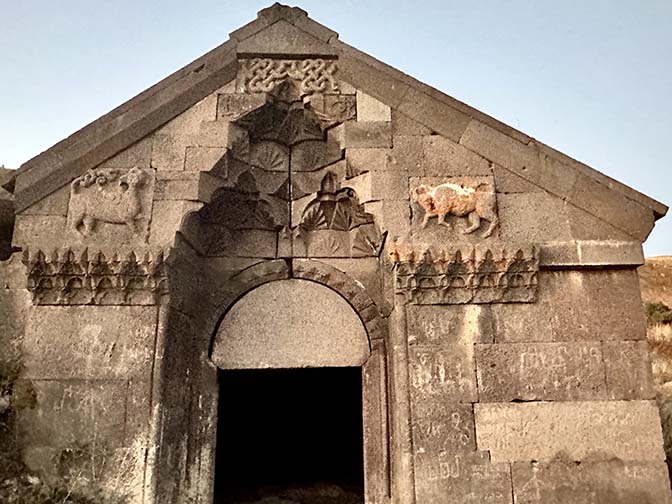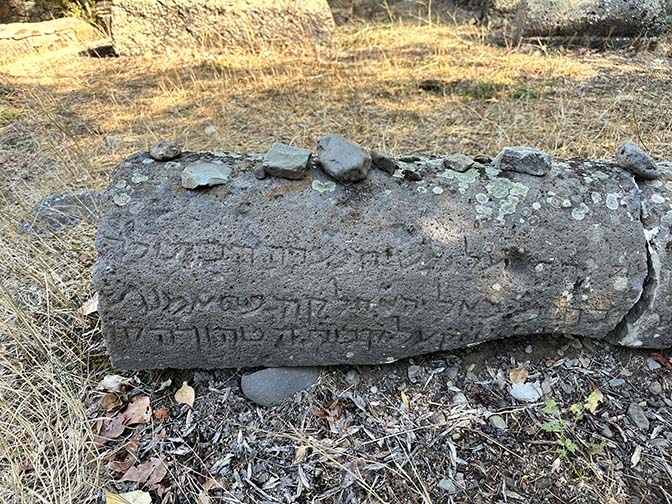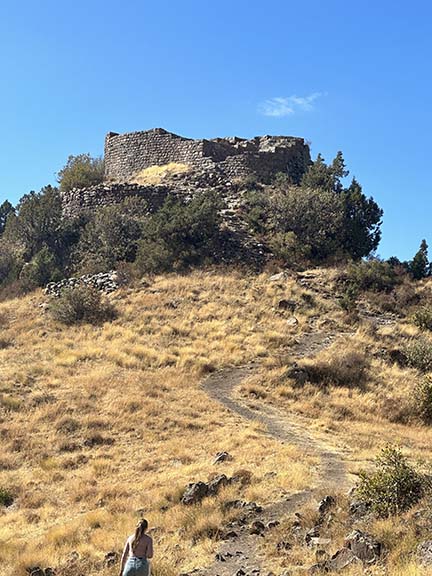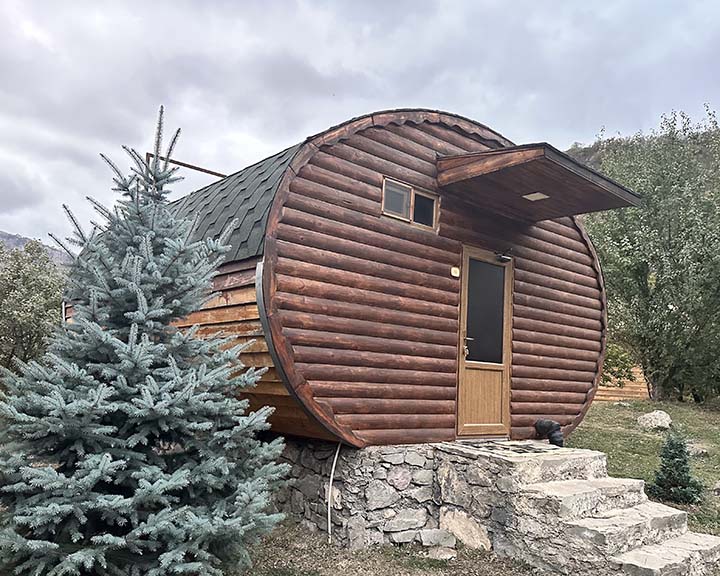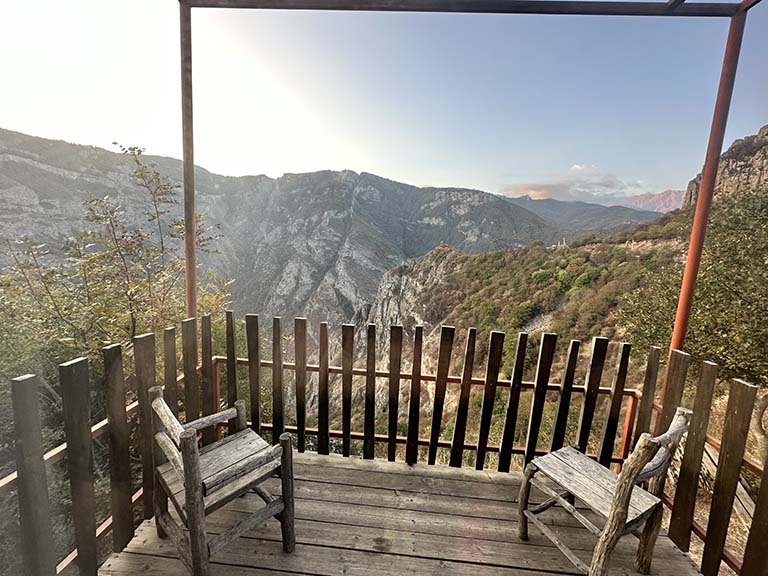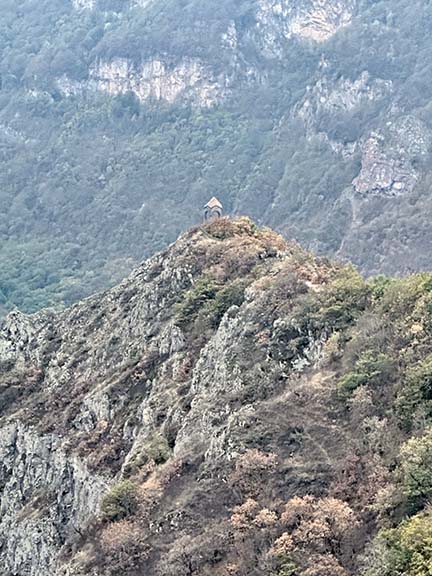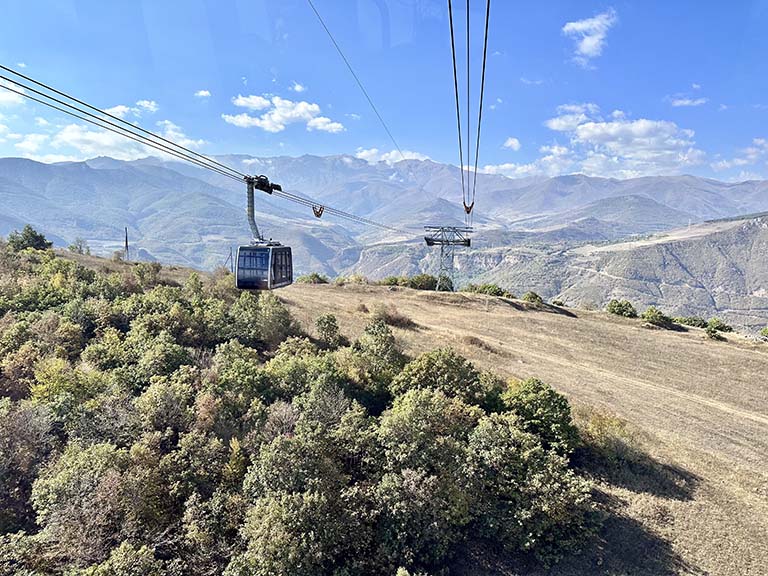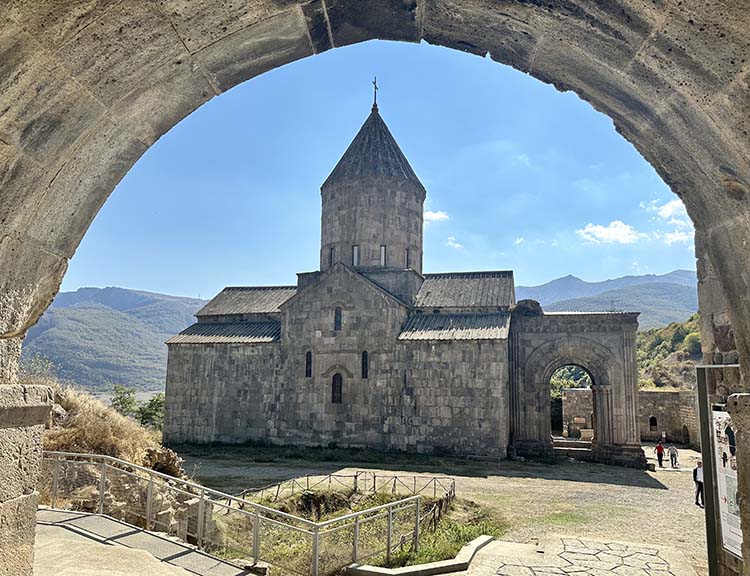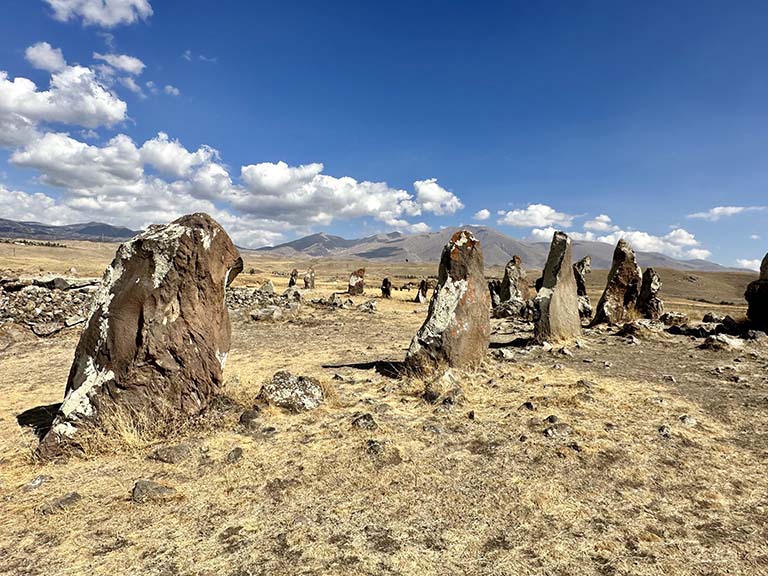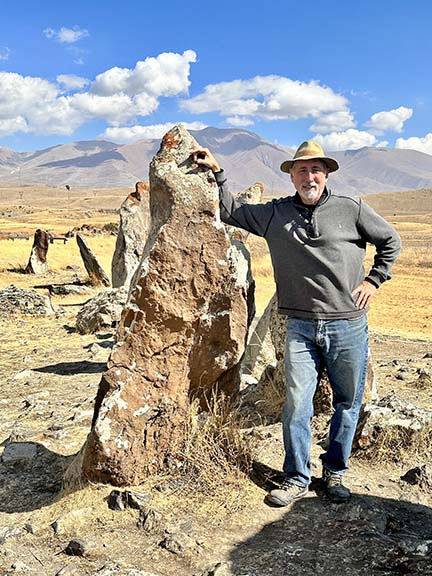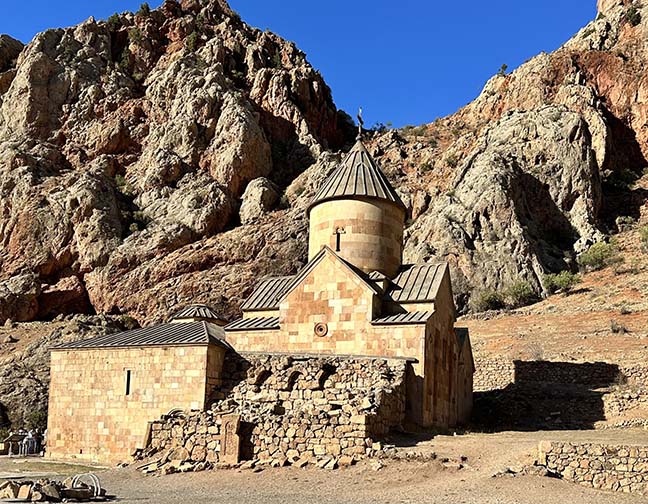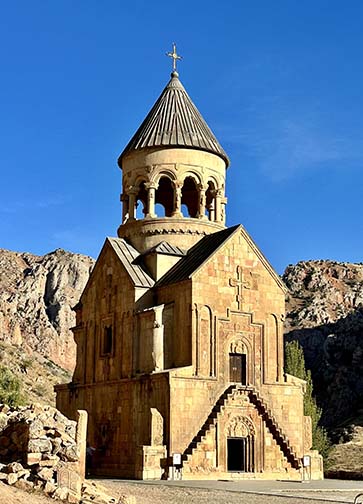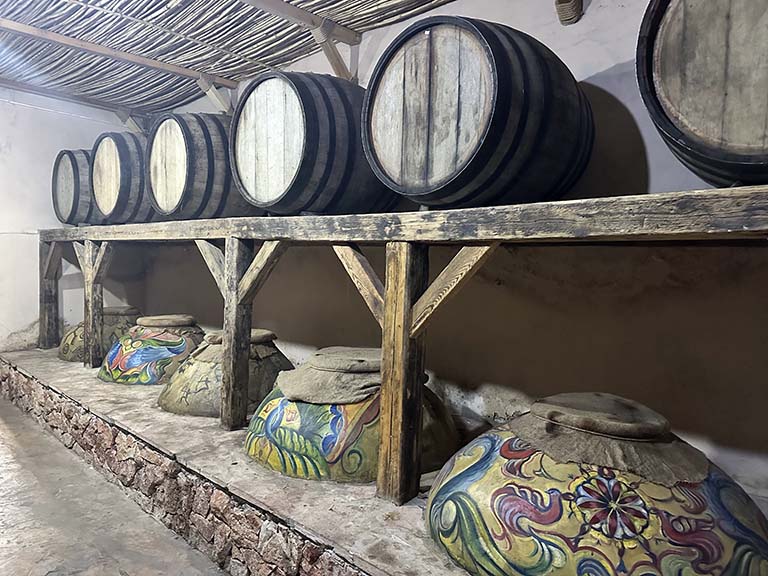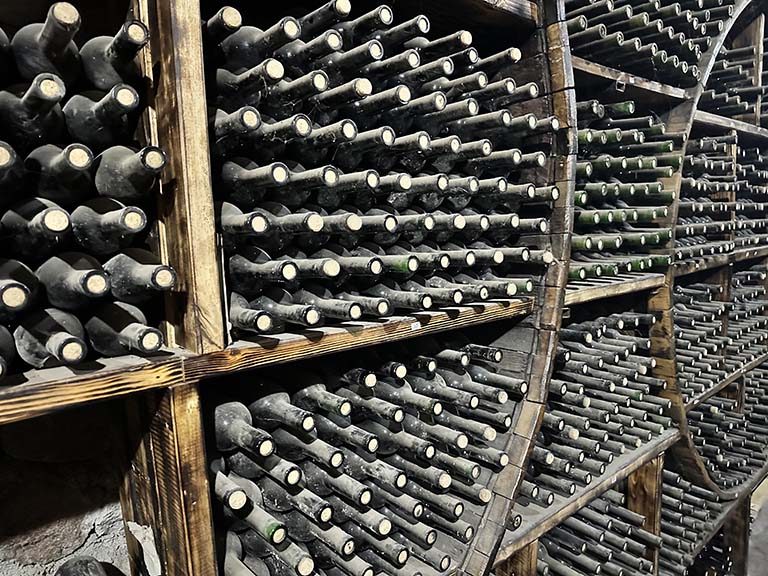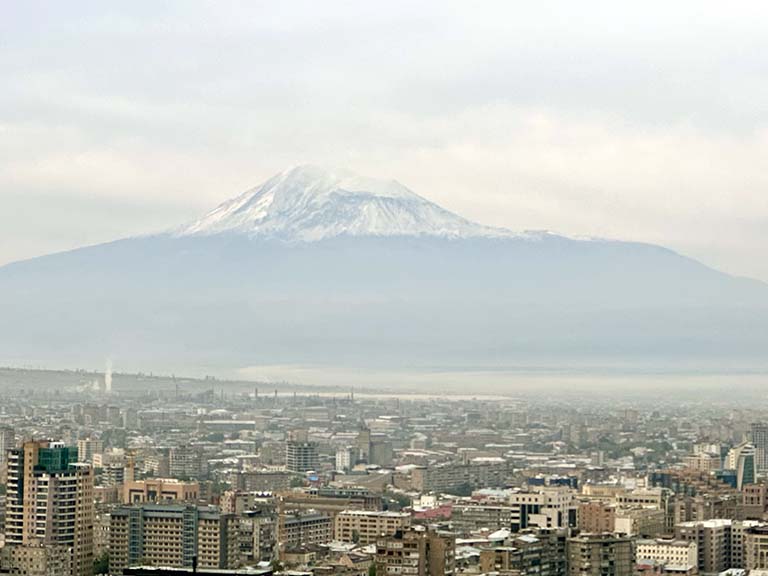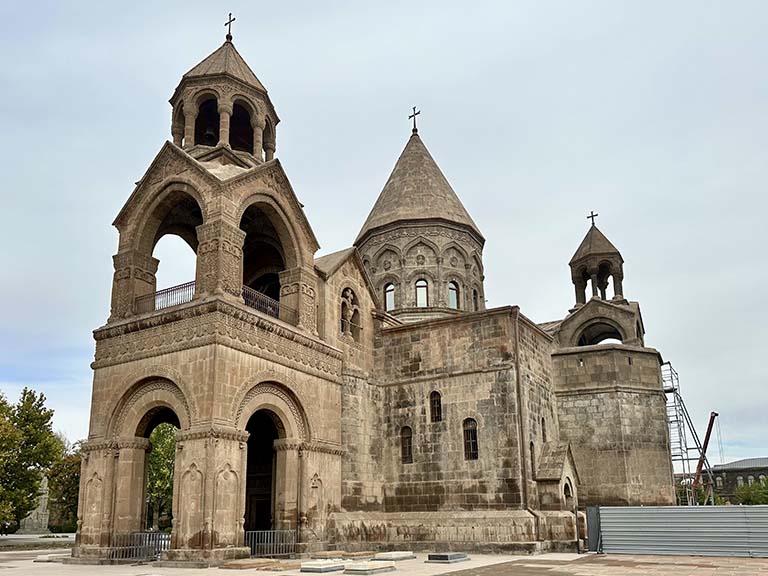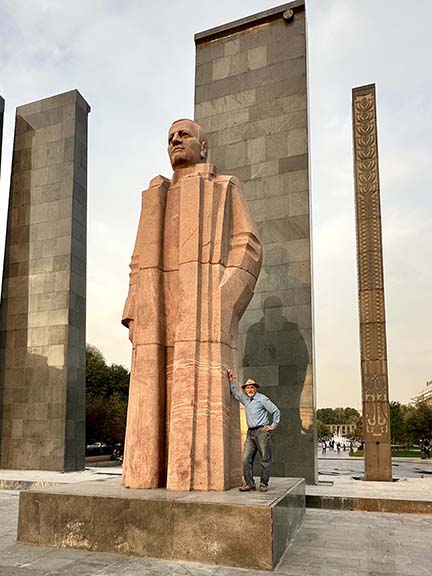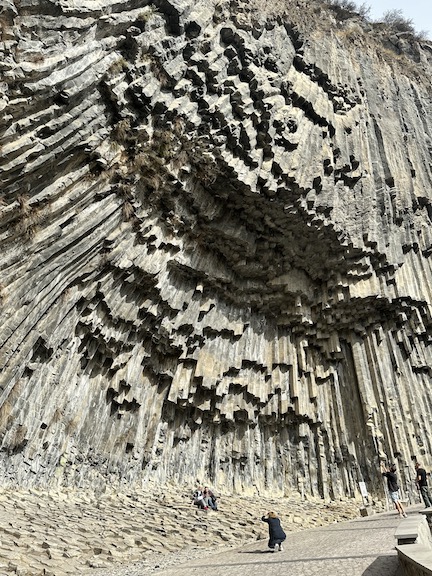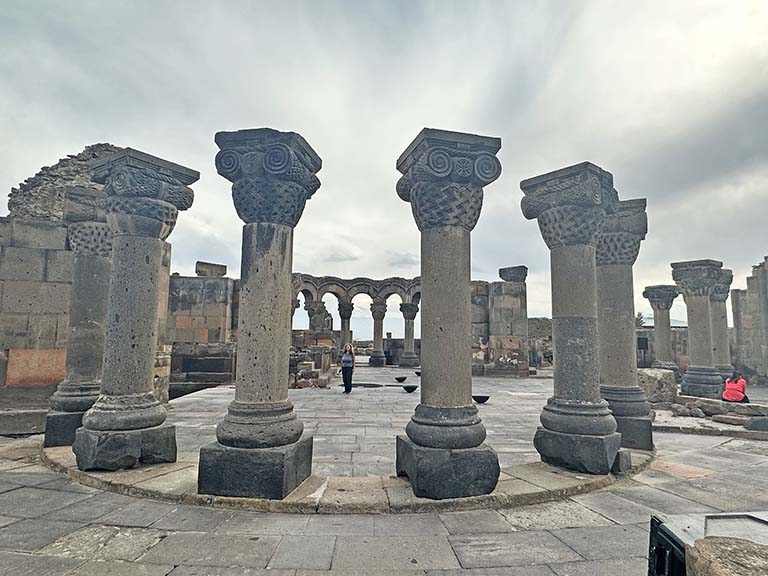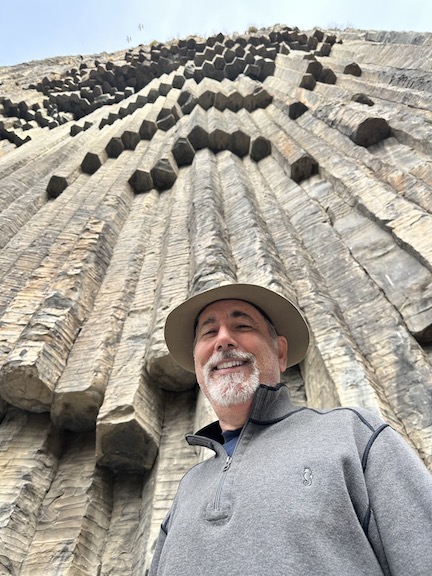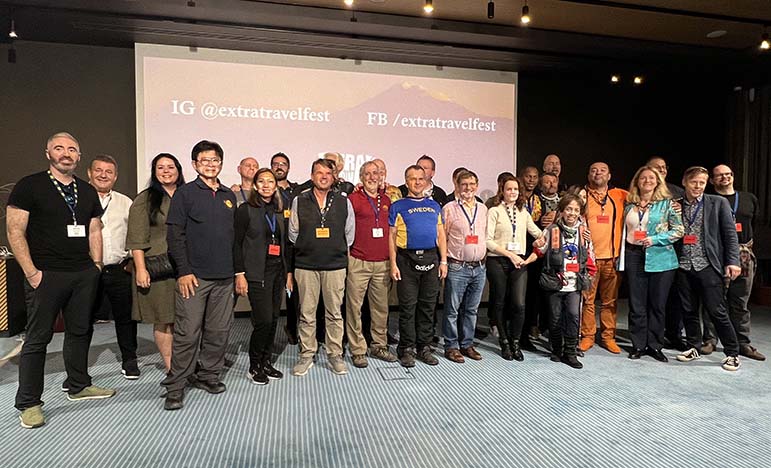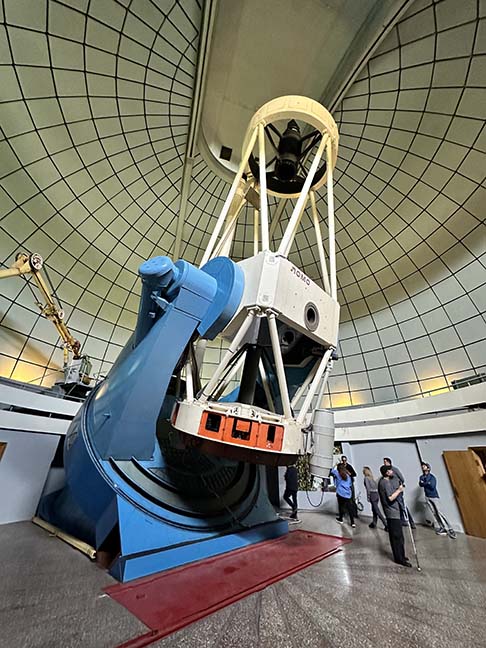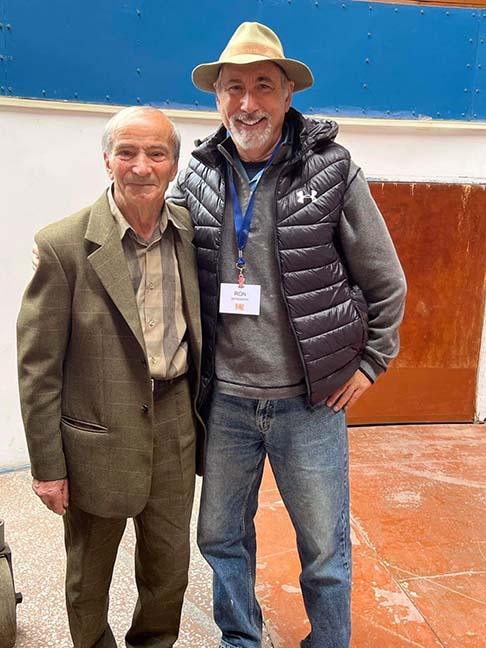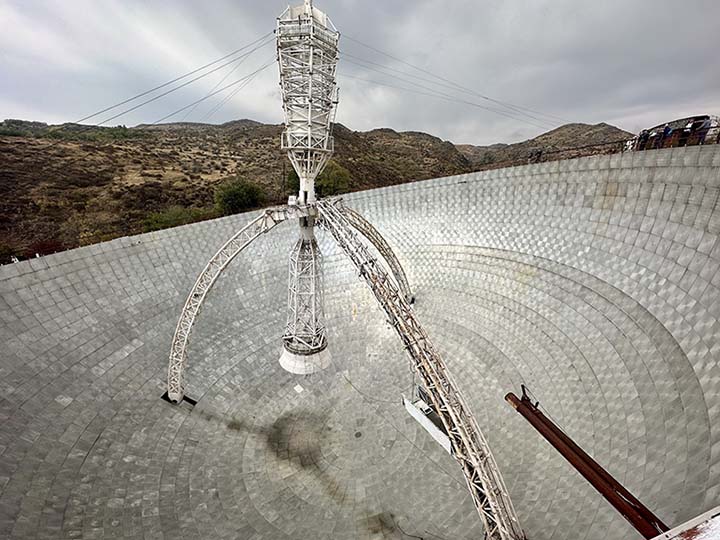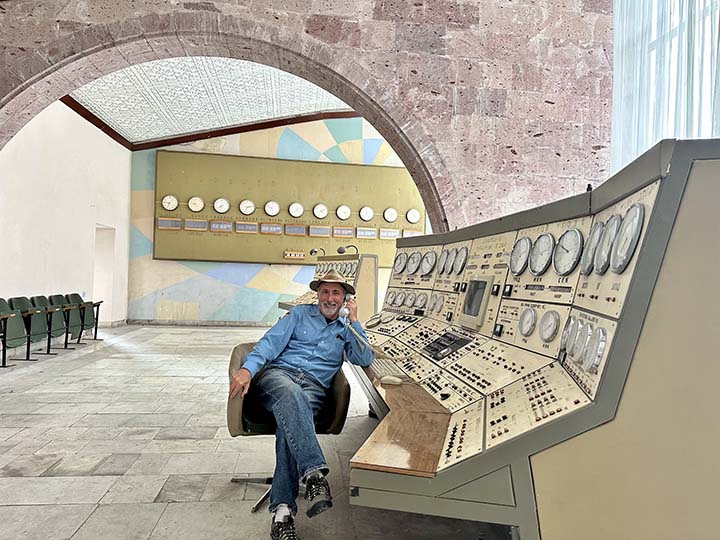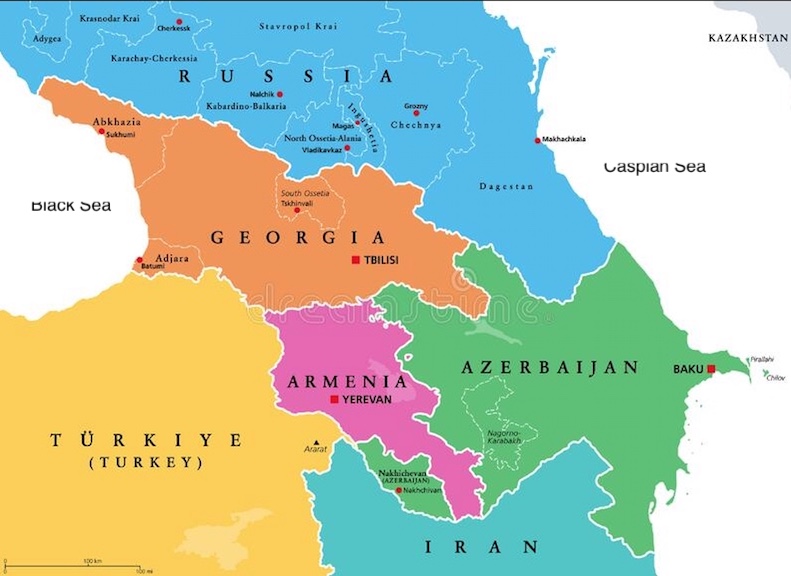
In contrast to its Muslim neighbors, Armenia enjoys good relations with Georgia, a fellow Christian country. The transit over the border is quick and easy. Our new guide is waiting for us to begin the program.
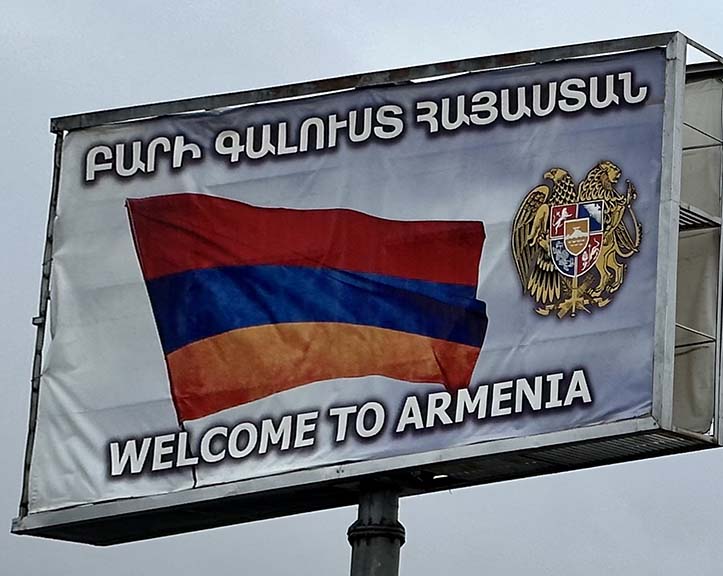
If you were churched-out in Georgia, get ready for a fatal overdose. Armenia takes pride in being the first and oldest Christian country, having adopted it as the official state religion in the year 301. Our first stop is Akhtala Monastery, dating from the 10th century, the first of many, many ancient churches and monasteries. During the Soviet era, they were almost all closed but have since be revived.
|
|
|
|
|
It's already dark by the time we reach a small museum dedicated to hometown heroes, the Mikoyan brothers. Artem Mikoyan was an aeronautical engineer who designed the first Soviet jet fighter plan and is the “M” MiG. His brother Anastas served as a high-ranking official in the Communist Party, rising from People’s Commissar of Food in 1934 (“Mikoyan” brand sausages are still produced in Moscow) and rising to nominal head of state and deputy to Khrushchev.
|
|
|
|
|
Our first night in Armenia in Diljian at an improbably posh hotel. In the morning we start with nearby Haghartsin Monastery (11th-13th centuries).
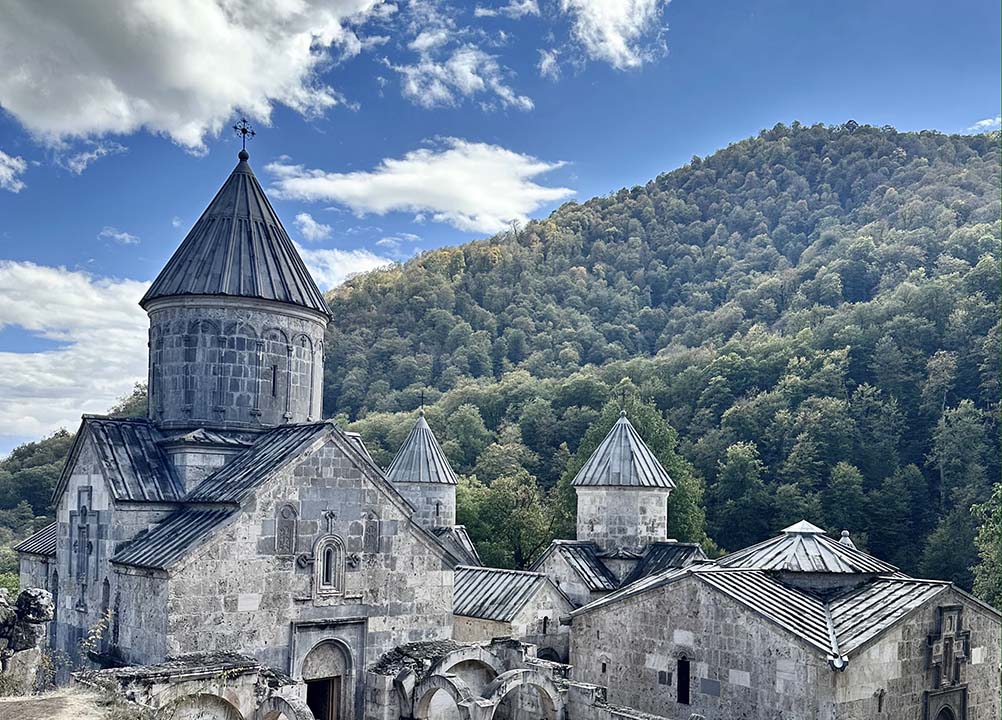
We then visit to the twin churches of the Sevanavank monastery complex (founded in the 9th century) on Lake Sevan. This used to be an island but during the Stalin era the water level was drawn down by over fifty feet so the locale is now a penninsula overlooking the lake.
|
|
|
Next is Noratus Cemetery containing about a thousand khachkars -- Armenian cross-stones. There are about 1000 of them, mostly 400-500 years old, along with more modern funerary monuments.
|
|
|
|
|
The final stop of the day is Orbelian’s Caravanserai. Dating from the 14th century, it is a significant if unspectacular relic.
|
|
|
We overnight in Yeghegis village where we run into a tour group also enroute to the big meetup in Yerevan. Nearby is a Jewish cemetery used since the 14th century and only rediscovered in 1997.
|
|
|
Smbataberd Castle is a mountaintop fortress built and used from the 5th -14th centuries.
|
|
|
That afternoon we get our first view of Mt Ararat, the national symbol but off-limits to Armenians because it is on the other side of the Turkish border.
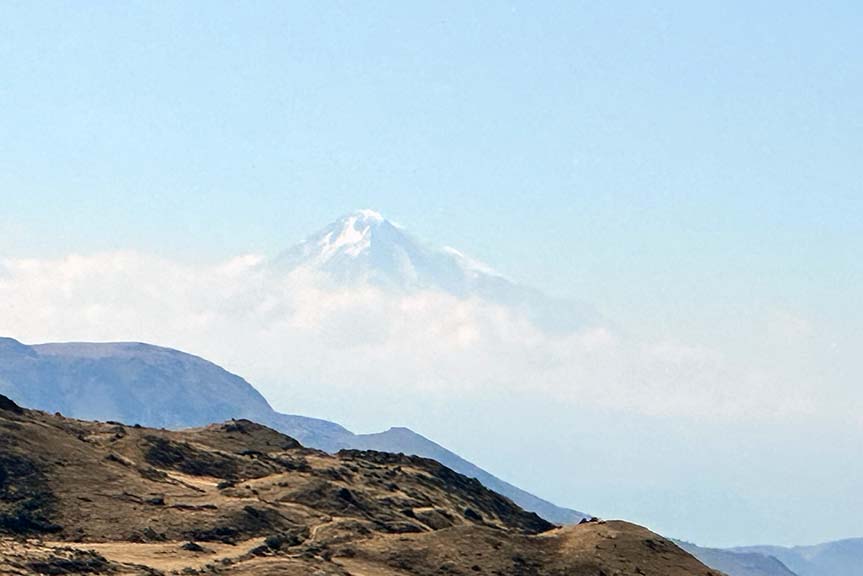
A photo stop at Shaki Waterfall.
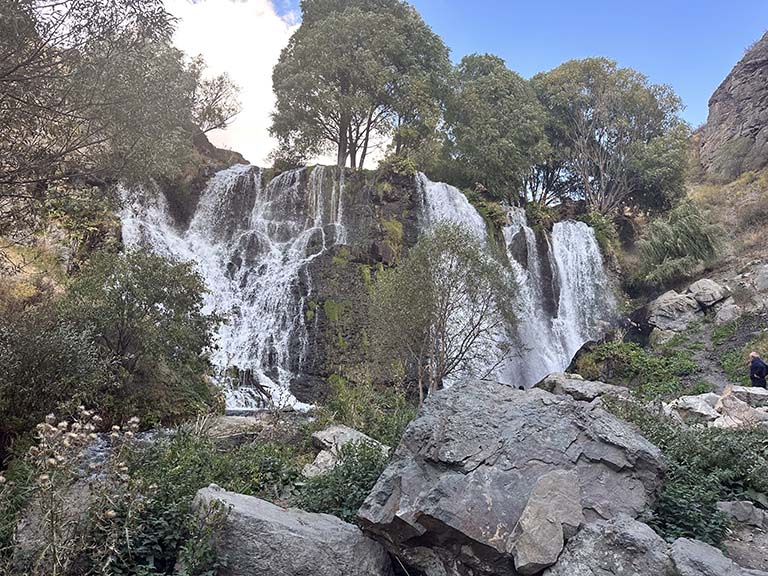
Then, the cave village at Khndzoresk, a town with no vowels to spare. Home to some 8,000 inhabitants at the beginning of the 20th century and not abandoned until the 1950's, it is accessed by a swinging bridge.
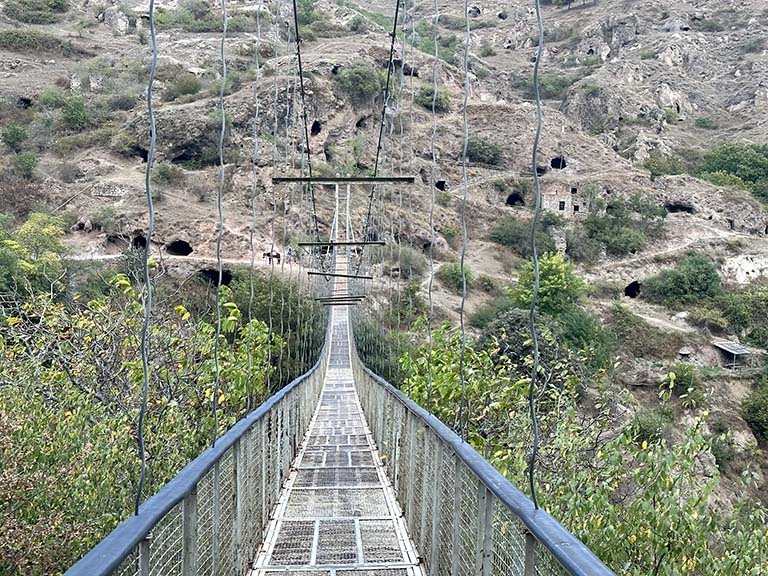
That night we sleep in a barrel, but it's a barrel with a view. The back porch opens on a deep gorge. From it we can see the halidzor -- which means "watchtower" -- from which the hotel takes its name.
|
|
|
|
|
|
The next day we ride a cable car over the gorge to visit the 9th century Tatev Monastery. It's all very scenic going, coming and while there.
|
|
|
After that is Carahunge, a prehistoric Armenian Stonehenge.
|
|
|
But wait, there's more! The sky and colors are perfect for a visit to Noravank monastery (13th century).
|
|
|
|
|
Like Georgia, Armenia is noted for its wines. But it is famous for its brandy, so another visit and tasting are on the menu.
|
|
|
As is another view of Ararat.

We finally reach the capital, Yerevan, practically at the foot of Mt. Ararat. Many sites and sights, including Etchmiazian Cathedral, the "Vatican" of the Armenian Apostolic Church and the world's oldest cathedral (4th century), Soviet-era monuments, and the Genocide Memorial. The latter is a somber place; the crucible of their modern national identity is the 1915-17 events in which a million or so Armenians died at the hands of the Ottomans with many of the remainder fleeing abroad to become the Armenian diaspora. (This is all denied by Turkey, and in Azerbaijan they are eager to tell of alleged massacres of Azeris by Armenians in 1918.)
|
|
|
|
|
|
Just out of town are the Greco-Roman Garni Temple, the ruins of the 7th century Zvartnots Cathedral, and a natural formation dubbed Symphony of Stones.
|
|
|
|
|
|
It's time for ETF, three days packed with lectures, meetings and parties and an opportunity to see people you’ve met on previous trips and meet those you only know from the internet. Just about everyone is a member of the Facebook group EPS (Every Passport Stamp). Two sites which make it easy to keep a count are MTP (Most Traveled People, mtp.travel) and Nomadmania (nomadmania.travel).
I am proud to stand among those attendees who have have been to 150 or more UN countries. The list gets increasingly more exclusive until finally the two guys left standing have been to all 193 UN countries twice.
|
|
|
On the fourth day there is a special post-conference trip. First we visit Byurakan Observatory. What appears to be Flash Gorden’s death ray is actually a one-meter optical telescope commissioned by Hitler as a gift to Mussolini. At the end of the war it was taken by Russia as war booty and installed here.

Part of the complex is a 102 inch mirror telescope, one of the largest in the world, still searching the skies. I shake hands with its longest-serving employee who, as a young man, shook hands with Krushchev when he came to inspect this triumph of Soviet science.
|
|
|
Then on to the abandoned, closed-to-the-public Orgov radio-telescope where we have great fun exploring the control systems.
|
|
|
Finally, the Aragats Research Station, still under the aegis of the Yerevan Physics Institute. Originally planned as part of a science city, today it is a landscape littered with industrial and scientific detritus. We travel through its underground tunnels and chambers holding the world’s largest electromagnet and still-active cosmic ray detectors (no photos allowed).
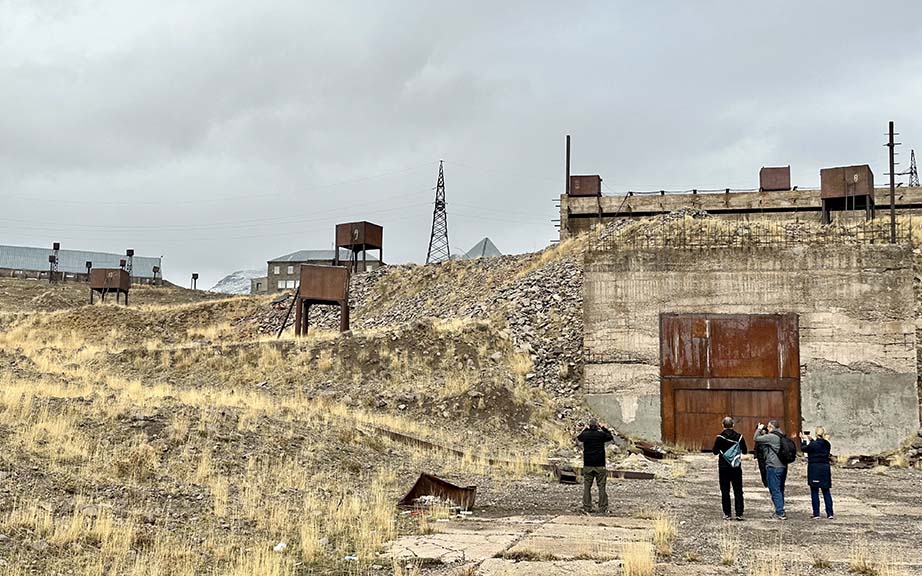
Inspired by the achievements of the other conference attendees, I feel the need to up my country count. I am still missing three to complete the Middle East, so it’s there I am aheading.
Trip date: September-October 2022
